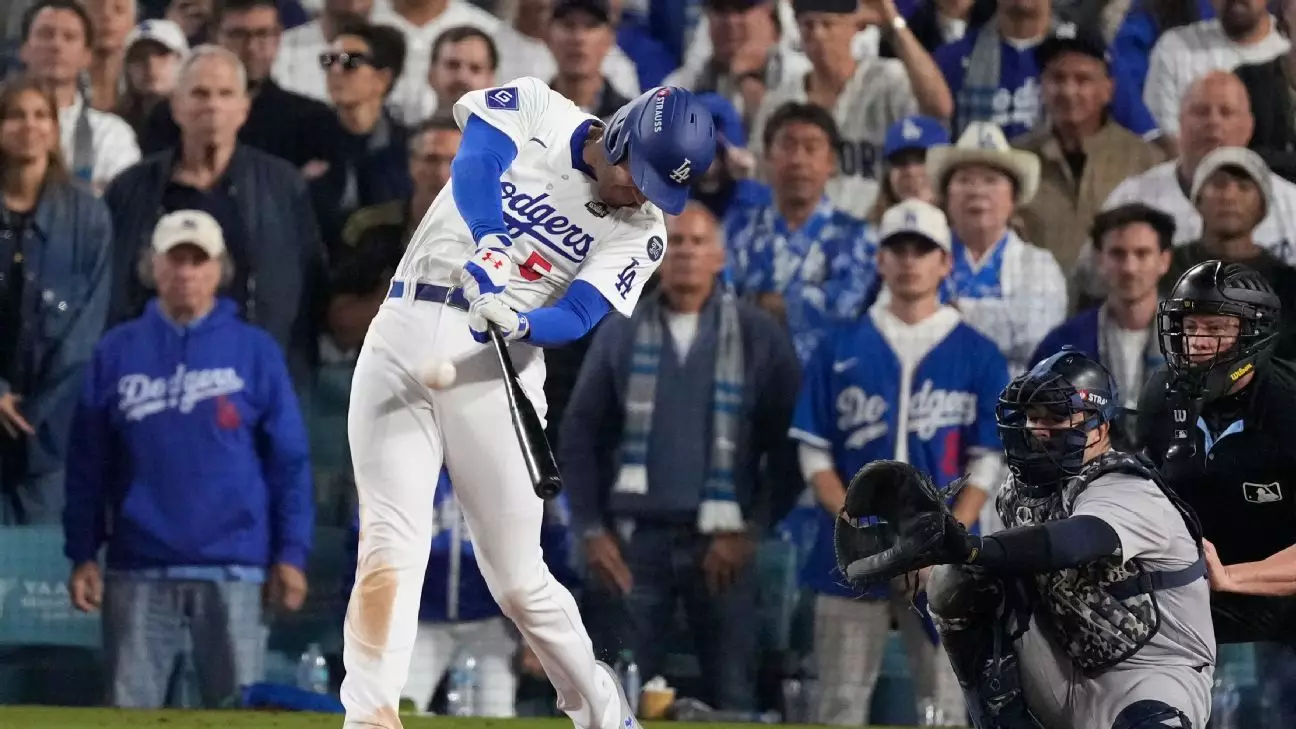In a spectacular turn of events during Game 1 of the 2024 World Series, Freddie Freeman, first baseman for the Los Angeles Dodgers, carved his name into history. His walk-off grand slam not only secured a significant victory for the Dodgers but also led to the sale of the ball for an astonishing $1.56 million at SCP Auctions. This price tag places Freeman’s home run ball as the third most valuable baseball ever sold, outshining Aaron Judge’s 62nd home run ball, which fetched $1.5 million just two years prior. Such financial milestones elevate Freeman’s extraordinary feat from simply being a game-winning moment to a pivotal chapter in the narrative of sports memorabilia.
Freeman’s grand slam holds immense importance beyond its impressive financial valuation. SCP Auctions President David Kohler emphasized the artifact’s significance, linking it to over a century of World Series history beginning in 1903. For fans and collectors alike, the sale of this ball represents a tangible connection to a defining moment in the sport. This record-breaking event not only reinforces the cultural relevance of baseball but also underlines the increasing market for sports memorabilia, where historic artifacts can command astounding prices.
The story of the ball doesn’t just rest on its monetary value; it is also filled with human emotion and surprise. Ten-year-old Zachary Ruderman, who initially believed he was leaving school for a dental appointment, was taken to the game as a surprise. When Freeman’s memorable homerun rattled beneath the seat, it was his father who managed to retrieve the prize after Zachary inadvertently batted it toward him. Their experience encapsulates the magic of baseball—a sport that brings families together, creating memories that can last a lifetime. The Ruderman family’s aspiration for the ball to be displayed in Dodger Stadium speaks volumes about the importance of preserving baseball history for future generations.
In stark contrast to Freeman’s grand slam ball was the unsold Lou Gehrig World Series jersey, which was expected to reach a staggering $4 million but failed to meet the reserve price in the same auction. This serves as a poignant reminder of how artifacts can vary dramatically in their perceived value, based on market demand and emotional resonance with fans. The two sales illustrate a captivating paradox in the sports memorabilia market: while some items ascend to incredible heights, others languish in obscurity, underscoring the unpredictability of value in sports collectibles.
The auction of Freddie Freeman’s walk-off grand slam ball transcends the sport, embodying the fusion of athletics and culture. As the Dodgers clinched the series in five games, Freeman not only earned his second World Series title within four seasons but solidified his legacy in baseball lore. With every sale of memorable sports artifacts, we are reminded of the enduring impact such moments hold for fans, collectors, and future generations. The intersection of baseball and heritage continues to thrive, preserving stories and memories long past the final whistle.

